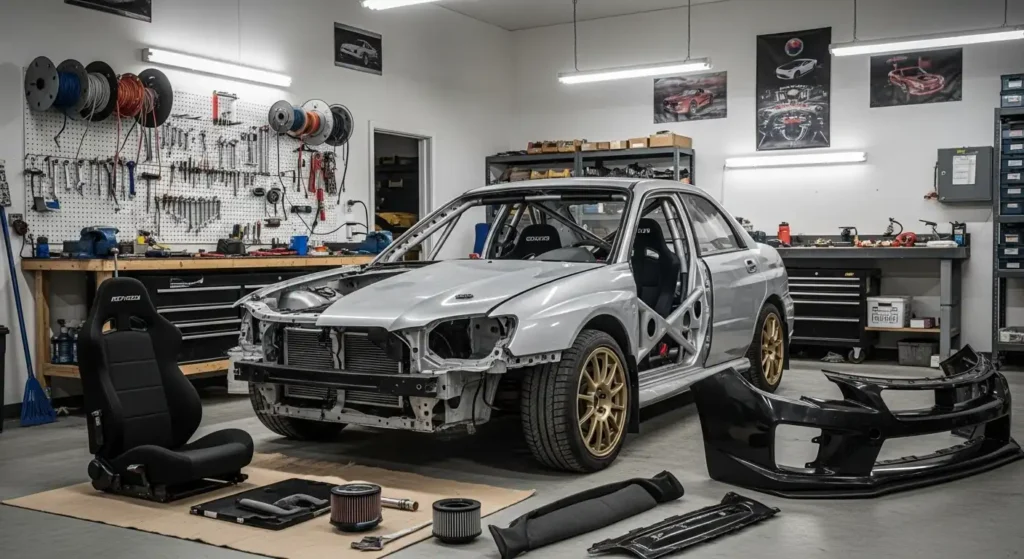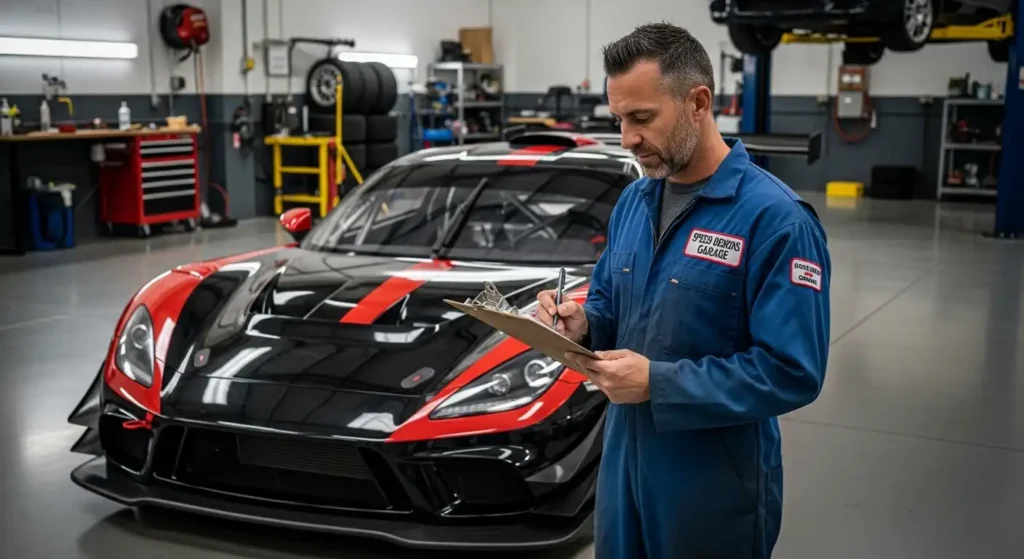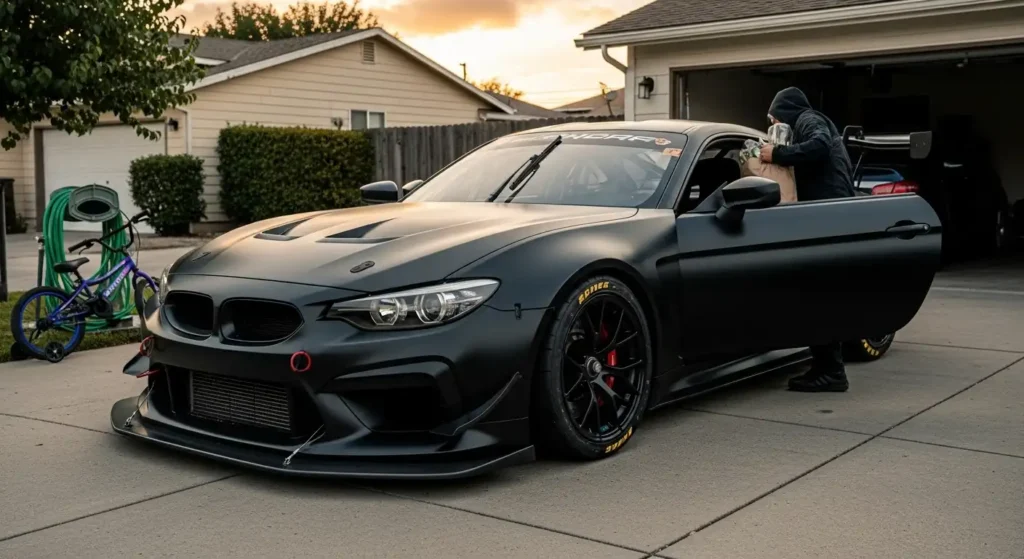Many car enthusiasts fantasize about owning a race car — raw, aggressive, uncompromising. But few realize the challenge of making such a beast livable on daily roads. The goal of this guide is to help you bridge the gap: transforming a track-bred machine into a street-usable performer. We’ll cover technical upgrades, comfort trade-offs, safety, legal compliance, and smart strategies to make the conversion viable.
1. Establish Your Goals & Constraints
Before lifting a wrench, define your priorities. Do you want truly daily usability (commutes, errands) or occasional weekend road use? Are you in a jurisdiction with strict regulatory compliance (emissions, noise, safety)? Will this remain street-legal or become a dual-use machine? Clarifying your scope will keep you from overbuilding or underdelivering.
For many, the ideal is a **dual-purpose machine** — one that can hang at the track on the weekend yet behave decently through traffic and over speed bumps on weekdays.
2. Baseline Assessment & Weak Point Identification
Start with a full audit of your race car. Common challenges when migrating to street use include:
- Harsh suspension that punishes bumps
- Too much noise / exhaust volume
- Poor low-RPM drivability (engine lug, poor throttle response)
- Excessive heat (engine, transmission, differential)
- Excess vibrations and lack of creature comforts
- Legal compliance: lighting, emissions, insurance liability
Document each “pain point” you must address. In many cases, the harshness acceptable at the track becomes unbearable on public roads.
3. Suspension & Ride Comfort Tradeoffs
Track-tuned suspension (stiff springs, aggressive dampers) offers excellent control, but on public roads it leads to fatigue and constant jarring. To mitigate this:
- Use adjustable coilovers (with multiple damping settings) so you can “soften” for street and “stiffen” for track days
- Select medium-rate springs that balance control and compliance
- Ensure your shock absorbers have a comfortable mid / rebound setting
- Use progressive or dual-rate springs to allow some initial compliance over small bumps
- Optimize anti-roll bars (tweak stiffness, or use adjustable bars to soften for street)
- Retain or soften bushings compared to full solid race mounts (rubber or polyurethane may be better than hard mounts for daily comfort)
4. Drivetrain, Gear Ratios & Engine Tuning
Many race cars are geared aggressively (short gearing) and tuned for high RPM performance. On the street, that can lead to poor highway cruising and drivability. Steps to reconcile this:
- Choose a final drive ratio or differential setting that allows comfortable cruising RPM at highway speeds
- Use flexible gear spacing (if transmission is aftermarket) to allow usable low gears for traffic and tall top gears for highway
- Map the ECU (or engine control) for smoother throttle response and better low-end torque delivery. Retain “safe” maps for street use, while using richer / aggressive maps for track.
- Implement a dual map / switchable map system (race / street switch) if possible
- Consider driveability tuning such as torque fill, transient enrichment, and knock protection
5. Cooling & Thermal Management

Race engines generate extreme heat under load. On the street, traffic, low speed, and idling exacerbate thermal stress. You must reinforce cooling systems:
- Upsize radiator(s), use higher capacity cores, and dual core systems
- Install oil coolers (engine oil, transmission oil, differential oil) with appropriate plumbing and thermostatic control
- Use auxiliary electric fans and thermostatic control to manage airflow at low speeds
- Use high-flow water pumps, low temperature thermostats, and robust coolant (e.g. high grade coolant, additives)
- Manage heat in engine bay: heat shielding, thermal wraps, ducting, ventilation ducts, hood vents
- Insulate critical wiring, fuel lines, and sensitive components from heat sources
6. Brakes, Tires & Traction Setup
Braking and traction control must balance aggression with repeatability on street surfaces:
- Use quality brake pads rated for both street and track; avoid pads that overheat or glaze at street cooling levels
- Use slotted or drilled rotors to help dissipate heat, without sacrificing durability in street conditions
- Use braided stainless steel brake lines for better pedal feel and reduced fluid expansion
- Choose tires that work in both contexts — semi-slicks or high performance street tires (with acceptable wet grip and longevity)
- If your car has traction or stability control, tune it to assist street safety rather than be overly intrusive
7. Noise, Vibration & Harshness (NVH) Mitigation
Race cars often sacrifice comfort and acoustic control. You need to reintroduce some NVH measures to make street use tolerable:
- Add or retain sound insulation in strategic places (floor, firewall, doors, roof)
- Use dampening mats and acoustic panels (but keep weight cost in mind)
- Balance exhaust tone: use mufflers or resonators that reduce drone / noise at cruising RPM
- Mount critical components (ECU, fuel pumps, electronics) using vibration dampers or rubber isolators
- Ensure engine and transmission mounts are not too rigid—some compliance can reduce harshness
8. Safety, Legal & Street Compliance
This is often the trickiest part. You may build the fastest street-usable race car, but if it fails to comply with local regulations, it’s useless on public roads.
- Verify lighting: headlamps, turn signals, brake lights, reflectors must meet road standards
- Ensure your exhaust emissions comply (catalytic converters, O₂ sensors, mufflers) as required locally
- Get required inspections / road homologation (if applicable in your country) to certify street legality
- Ensure windshield / wipers / defogging / safety glass standards
- Use DOT / street compliant tires, seat belts, mirrors, etc.
- Insurance: disclose modifications and ensure legal insurability for a modified vehicle
- Place disclaimers: some advanced mods may render your car non-compliant in certain zones or under emission laws
9. Practical Comfort Features & Daily Use Additions
To survive daily use, you’ll want a few creature comforts and practical touches:
- Air conditioning / HVAC (if originally removed or omitted) or upgraded system with better cooling capacity
- Noise dampers (see NVH mitigation) to reduce cabin drone
- Interiors: comfortable seats (or semi-race seats with better padding), adjustable ergonomics
- Info display: integrate engine monitoring, oil / coolant temps, alarms, etc.
- Easy access: side steps, door sills, protective covers—helpful when you get in / out every day
- Lighting: interior lighting, ambient lights, back-up camera or sensors (if desired)
- Electrical conveniences: power windows, charging ports, infotainment (if you want some luxury) — only if they can survive the rough environment
10. Testing, Validation & Tune Refinement
Once you’ve made your modifications, you must thoroughly validate performance in real-world and track settings. The best approach is iterative:
- Shakedown runs on closed circuits or private roads (if permitted)
- Monitor all vital parameters (temps, pressures, voltages, etc.) via data logging
- Tune your maps based on real behavior — adjust fueling, timing, mapping, control strategies
- Assess drivability: low RPM response, throttle modulation, transitions, cold start behavior, etc.
- Refine suspension settings: ride height, camber, toe, damping, roll bars
- Check compliance again after every major change (legal, safety, emissions)
11. Trade-off Awareness & What You’ll Sacrifice
Be realistic: you will give up some extremes of performance to gain usability. You may not hit full race levels all the time, but the goal is balance. Expect compromises in weight, ultimate grip, ultra-sharpness, and raw track aggression. But what you gain is a usable, drivable, exciting car that lives on the road and performs at the track.
 12. Real-World Example: Converting a Mustang Drag Machine
12. Real-World Example: Converting a Mustang Drag Machine
To illustrate the process, consider the story of converting a high-power Mustang drag car into a more usable street/road machine. In one such case, the builder replaced carburetion with EFI and added a modern ECU to control fuel, timing, cooling, and various systems. They upgraded wheels, tires, brakes, and LED lighting. They also focused on reducing weight and improving usability.
13. Pitfalls to Avoid
Watch out for these common mistakes:
- Overbuilding: adding too many race-level mods, making the car intolerable for daily use
- Poor mapping: aggressive race map used on the street causing poor drivability or driveline shock
- Neglecting cooling for idle / low speed driving
- Excess noise / vibration that makes the car fatiguing
- Failing compliance: exhaust noise, emissions, lighting — and getting pulled off road
- Underestimating maintenance and wear costs of a highly tuned machine in a daily environment
14. Summary & Best Practices Checklist
Here’s a checklist summary to guide your project:
- Define scope: street + occasional track, or more dedicated hybrid use
- Audit your race car’s weaknesses for street use
- Select suspension that’s adjustable and forgiving for daily roads
- Tune drivetrain for usable low-end and highway cruising
- Bolster cooling and thermal stability for stop-and-go traffic
- Choose brakes and tires that are capable but compliant for street
- Mitigate NVH to reduce fatigue and noise
- Ensure legal, safety, emissions compliance in your jurisdiction
- Add comfort and daily usability features prudent to your risk tolerance
- Test, log, refine — iterate gradually
Further Reading & External Resource
For additional reference and authoritative depth on building street-legal race cars, see “How to Build a Street-Legal Race Car: Essential Modifications” — an excellent resource covering technical and legal considerations.
Related reads on our blog:
Thanks for reading. If you’re embarking on your own build, take your time. Balance is key — the best converted race car is one you enjoy driving every day and pushing at the track.


 12. Real-World Example: Converting a Mustang Drag Machine
12. Real-World Example: Converting a Mustang Drag Machine